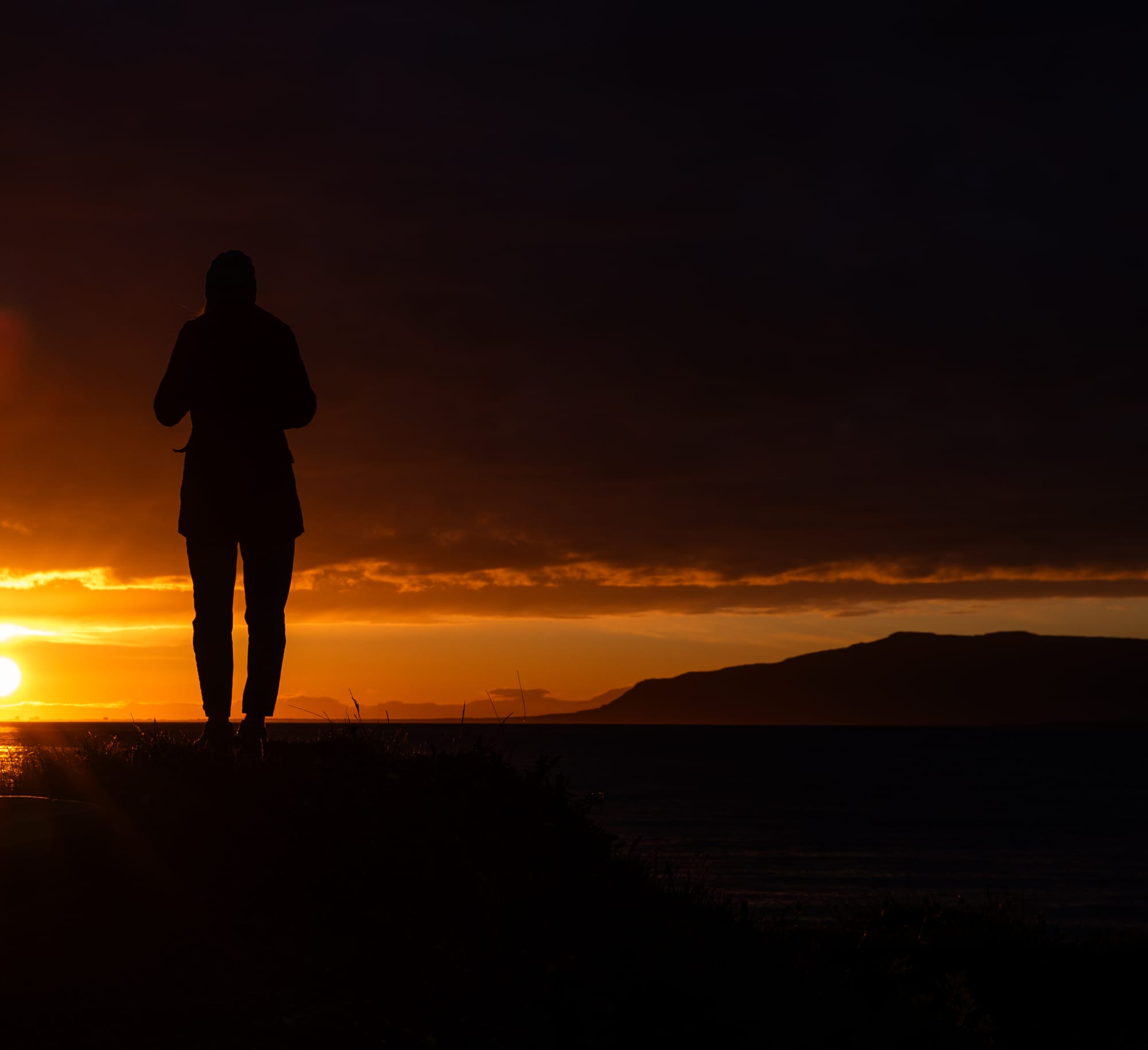My Photo Walk Routine

I've been walking and photographing for some years now, and as I said in this other post, I find it remarkably rewarding. In the process, I've developed a modus operandi, which I'd like to share with you, for no particular reason.
I've divided my workflow into five 5 phases and 22 steps. I'm not saying it's the best way to carry out a (photo) walk, but it's definitely a bronze, maybe even a silver.
1️⃣ Planning
Unless the opportunity is unique, I don't sit down and plan my walks like I would my taxes. Most of the time, the arrangement happens in my head a few moments before I exit the door.
🗺️ 1. Design
I decide where to go — neighbourhood, city centre, forest, the Middle Ages, etc. Sometimes, the idea has been in my head for a while, and other times, the choice is on a whim. Once I know where I'm headed, I figure out the "how" — bus, train, plane, Millennium Falcon, etc. I use Google Maps for transportation, but Apple Maps for walking because of the blue direction indicator.
🎒 2. Pack
I approach my photography shelf and choose my setup. I only have one camera, so that's easy. The lens choice depends on the location and the time of day. I keep accessories to a minimum too: one extra battery and memory card, wrist strap, lens pen, and a tissue pack. As for storage, I use a sling bag when possible. If I'm travelling abroad with my main camera bag, I'll leave all surplus equipment in a safe at the accommodation.
🧥 3. Dress
Before choosing my outfit, I check the weather forecast for temperature, humidity, wind, and precipitation. Using this intel, I open the wardrobe (or suitcase) and get dressed — casual or layered, umbrella or parasol.
2️⃣ Walking
This is the main attraction, where I move one foot in front of the other and press clicky buttons. Beware, this section may or may not include some of the most mind-blowing methodologies you've ever heard of.
🚍 4. Leave
This doesn't necessarily imply public transport — it could be on foot, bike, or the back of a Hungarian Horntail. I don't have my camera out during commuting as I tend to treat my walks like a ritual. Starting before arriving doesn't feel right.
📸 5. Prepare
Once I’ve arrived, I remove the lens cap, screw on the lens hood, and secure my camera to the wrist strap. As for settings, I use Aperture Priority, Auto for ISO, and White Balance. The minimum shutter speed varies: 1/250 for daytime and 1/60 for lowlight.
👟 6. Explore
I head off and immerse myself in my surroundings. This is one step out of many, yet it makes up the entirety of the walk. Once I see something interesting, or visualise a frame, I raise my camera, compose, and take the shot — are you taking notes? The first photos usually aren't up to my standards, but I commit to them anyway for the sake of a warm-up. Another thing: I don't stage things, but if I come across a scene I like, I might wait for a subject to enter it.
📷 7. Store
I walk up to any camera store that comes my way and drool over the equipment. I'm just pulling your leg, by "store" I mean the verb. Once I arrive at my end destination — sometimes the starting point — I put the lens cap back on, screw off the hood, unclip the strap, and return my camera to my bag.
🚌 8. Return
Similar to the departure, I don't take out my camera as I'm likely tired and out of the flow. Some like to rate their images during this step, but I prefer to lean on the window and pretend to be a leading man in a historical drama.
3️⃣ Organising
Once I'm back home, at a hotel, or suffering from an allergy at an irresistible cat café, I remove my bag, stretch my shoulders, and press my buttocks against a soft surface. This is the time to put things away and ready the equipment for the next outing.
🧹 9. Clean
I grab a dust blower and roughly clear any debris that may have etched into the camera and lens. You might find this unnecessary after every outing … and it most certainly is.
🪫 10. Charge
I remove the battery from the camera, put it to charge, and load the device with another, fully charged one. Once the used battery is charged, I put it back, ready to relay the other after the next walk. (You're already regretting reading this post, aren't you?)
📥 11. Import
Like all the cool kids, I use an external SSD to edit my images. Once connected to my laptop, I extract the SD card from the camera, import the photos, and return the card. Since my camera has two card slots, I format one and leave the other untouched until it gets full (for safety).
📁 12. File
On my SSD, I create a folder inside my "Photography" master folder, move it into the pertinent by-year subfolder, and rename it by the date and location of the walk. Inside it, I create two subfolders: "Raw" and "Edit".
✂️ 13. Select
If I have the time, I'll cull my images right away, at least a pass or two — I use Adobe Bridge for this. Once done, I select all the photos that didn't make the cut and delete them forever. I'm a minimalist monster, I know.
🧬 14. Rename
While still in Bridge, I locate the Raw folder and rename the batch of photos using my custom File Naming Convention. (You can learn about this in my dedicated essay, which I spent a good two weeks writing.)
4️⃣ Editing
I'd love to shoot in JPG and leap gracefully over this phase, but it appears I'm too nitpicking. Editing usually happens on another day for me, sometimes even years pass. I aim for naturalism, so my process is fairly straightforward.
💡 15. Lightroom
Inside my image-manipulating software of choice, I locate the folder with the raw files. Since I don't use third-party software for photo management, I opt for the Local feature instead of the Cloud one.
🪄 16. Preset
I select the batch of photos and apply a very basic preset crafted by yours truly. After that, I spend some time fine-tuning each major knob. This is where my perfectionism tends to creep in — one way to combat it is to limit my values to multiples of 10, another is to glance at my to-do list.
🎛️ 17. Custom settings
Similarly, I adjust all the settings that the present doesn't affect, things that vary too much between images: Exposure, White Balance, Color Mixer, Defringe, etc. To keep the nitpicking gremlins at bay, I take another look at my to-do list.
🎭 18. Masks
To conclude, if I sense the image demands the light to be reshaped or emphasised, I'll bother myself a little longer and apply radial and/or gradient masks. Usually, I subtract the light instead of adding it.
✨ 19. Polish
After this first round, I leave the edit for a while and return to it with fresh, unbiased eyes. After mourning my bad edits for a minute or two, I make a quick polishing pass and throw in the towel.
5️⃣ Exhibiting
This is the moment I give my photos an outlet, a proper resting place. This is the second most rewarding phase for me — can you guess which is numero uno?
📦 20. Export
While in Lightroom, I select all the finalised images and export them as full-quality JPGs to the Edit folder on the SSD. To keep my future self out of trouble, I maintain the same nomenclature for the JPGs as I do for the raw files.
🗄️ 21. Backup
Once all the media is finalised, I copy the completed photo walk folder onto two separate hard drives. I may keep a few completed walks on the SSD for added safety, but eventually delete them to make room for the next ones.
🚀 22. Share
I don't print my images, so this step counts as the final one. I exhibit my photos through a travel photography newsletter called Earthshine. Someday I'll venture into the print world — I've heard good things about it.
That's it. That's my entire process in five phases and twenty-two steps.
🎁 The End? Not quite …
You may or may not have noticed something odd about the feature image. The truth is, I clandestinely wrote a brother post to this one outlining 28 tips and tricks that will improve your photo walks.

